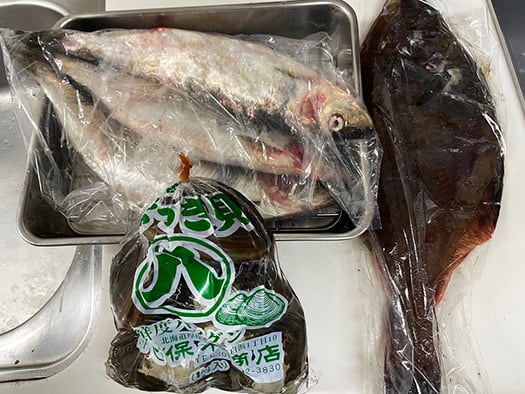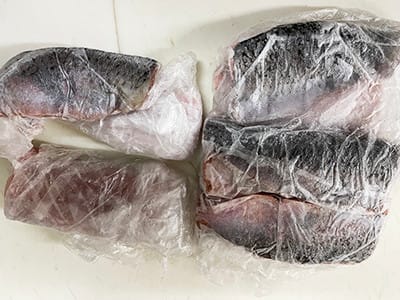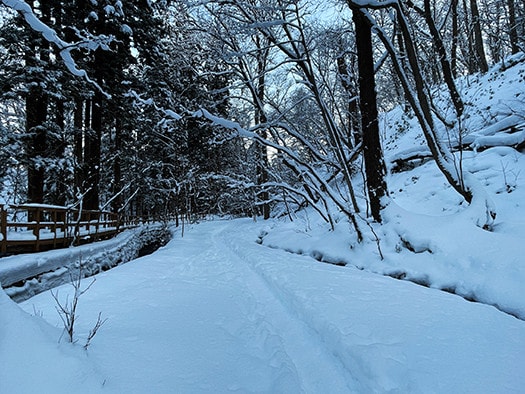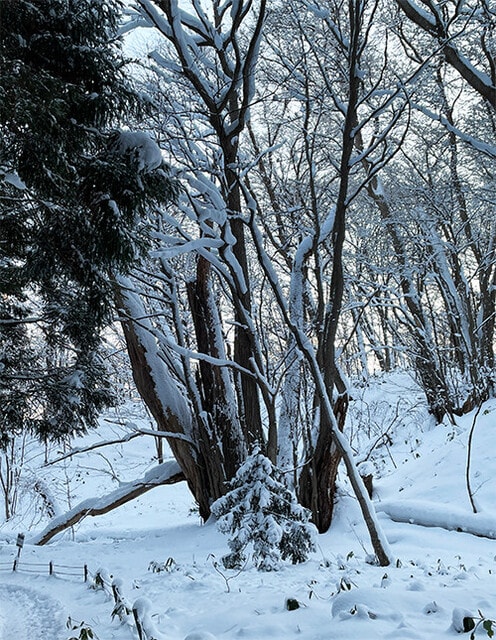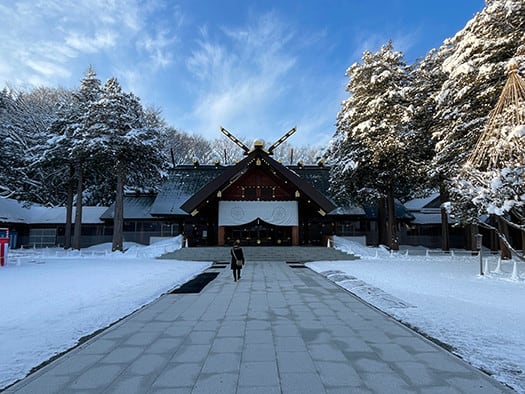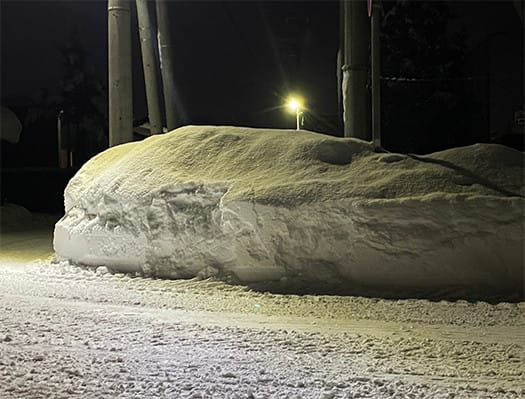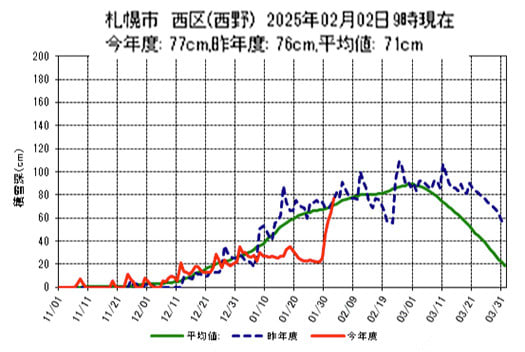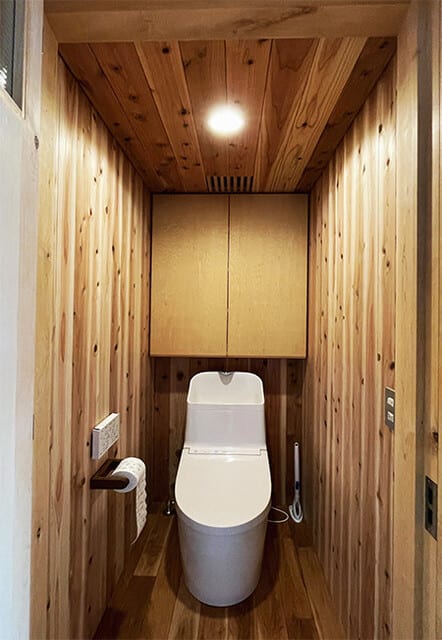
おっと、仕事に集中しすぎていたらあっという間にブログ更新のタイムリミット。って、年中無休で更新を心がけているため勝手な「自分だけ」のルール設定で、基本朝6時台にはその日の記事アップを済ませると決めているのです。こうでも決めないと自己管理できないのがホンネ。
昨日の宣言でなるべく本業周辺の「住宅」テーマでと思っていたのですが、さっそく腰砕け(泣)。ということで、本日は日課の早朝散歩コースについてであります。
札幌市西区山の手のわが家周辺であちこち、おおむね1時間程度での散歩コース設定ですが、カミさんといっしょの散歩に変容してきたので、冬場にはコース選定にいろいろ注文が付くようになってしまった。自分だけの時はどんな厳しい道路状況でも、スパイク靴底の運動靴を履けば、オールマイティなのですが、カミさん同伴の場合、氷状の滑る道では転倒の危険もある。
ということで、冬場には札幌市中心部の「地下街」が絶好と考えてときどき出没しているのですが、やはり難点は往復にどうしてもクルマ移動+JRや地下鉄などの公共交通を利用せざるを得ないこと。それもまたいいのですが、普段着感覚とはどうもなりにくい。気分的にはウキウキ感が出てきて面白いのですが、どうも気分的に「散歩」という枠を踏み出すように思ってしまうのです。ちょっとした「遠出」。
で、結局「中庸」として、いまはわが家周辺の街区「JR琴似駅」周辺の「SkyWalk Kotoni」という散歩ルートに収まってきております。24時間営業のスーパー店舗でちょっとした買い物をして、そのの駐車場制限時間範囲内(1時間)で、速歩気味に歩きまわるというコース選択。札幌市中心街区の「チカホコ」からススキノ、テレビ塔周辺までの広大な地下空間と比較すればコンパクトではあるけれど、圧倒的にコスパが良く、往復の散歩歩数もおおむね4,000歩超〜5,000歩は確保可能。スーパー店舗以外は全部SkyWalkとして、2階空間の同一平面を歩きまわることが出来るのがメリット。カミさんは「歩きやすくてサイコー」と高評価。途中には当然ながら琴似駅もあるので、ひとびとのその日の様子もわかって、社会性もわかりやすく伝わってくる。どっちかというと「自然愛好派」であるわたしですが、まぁ冬場の妥協策としてそれなりに好感も持って歩いております。
English version⬇
Local Sapporo Kotoni JR station area ‘aerial walk’ course.
The basic health strategy for elderly couples living in cold regions is the habit of walking. A fast walk is the best way to live a positive life. The course was chosen with priority given to foot safety in winter. Sapporo, Hokkaido
Oops, I was too focused on work and in no time at all I reached the time limit for updating the blog. I try to update the blog 24/7, so I set my own rule that I have to finish uploading the day's articles by 6am. The truth is that I can't manage myself unless I make a decision like this.
Yesterday, I had declared that I would try to write as much as possible on ‘housing’ themes around my core business, but I was shattered immediately (tears). So today, I'm going to talk about my daily early morning walk.
I have set up a walking course around my house in Yamanote, Nishi-ku, Sapporo, which takes about one hour, but as it has changed to a walk with my wife, I have to make various orders for course selection in the winter. When I am on my own, I can walk in all kinds of tough road conditions if I wear athletic shoes with spiked soles, but when I am accompanied by my wife, there is a risk of falling on icy, slippery roads.
In winter, I sometimes go to the underground shopping centre in central Sapporo as I think it is the best place to go, but the drawback is that I have to use public transport such as JR or the underground to get there and back, in addition to my car. That's also fine, but it's hard to feel like you're wearing normal clothes. It's interesting because it gives you a feeling of excitement, but it makes you feel like you're stepping out of the ‘strolling’ frame of mind. A bit of ‘going away’.
I have chosen the ‘SkyWalk Kotoni’ walking route around the JR Kotoni station area, which is a 24-hour supermarket, and then walk around at a brisk pace within the parking time limit (one hour). Course selection. The route is compact compared to the vast underground space from Chikahoko to Susukino and the TV Tower area in the central area of Sapporo, but it is by far the most cost-effective and the number of steps for a round trip is generally more than 4,000 to 5,000 steps. The advantage is that you can walk around the same plane of the two-storey space as SkyWalk, except for the supermarket shop, which is all SkyWalk. My wife highly recommends the SkyWalk, saying that it is easy to walk around. Naturally, Kotoni Station is on the way, so you can see how people are doing on a given day and get a clear picture of their social life. I am more of a ‘nature lover’, but I also like it as a compromise in the winter.













